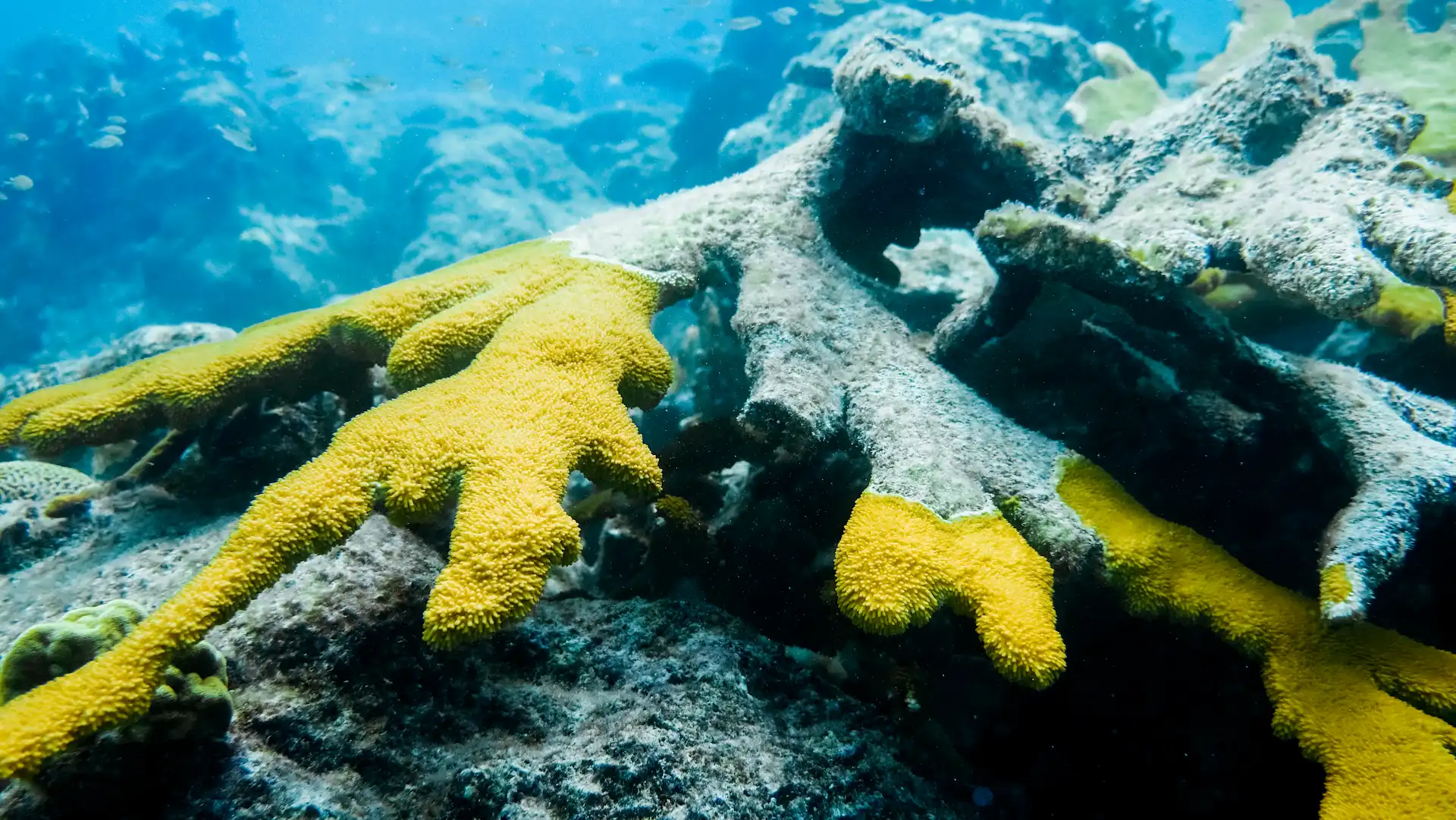Record-Breaking Ocean Temperatures
Marine heatwaves and why they matter

All over the world we are witnessing record-breaking temperatures and longer-lasting periods of extreme heat. These abnormally high temperatures and persistent heatwaves are becoming such common occurrences that it can sometimes feel like this is Earth’s “new normal.” And without more ambitious and rapid climate action, it might be.
When we think about how hot it is, we tend to think about the air temperature, and sometimes the ground temperature (think about a parking lot on a hot day), because that’s typically what we experience in our daily lives. But these extreme heat events are not isolated to those of us on land. The ocean is also experiencing record-breaking temperatures and more frequent marine heatwaves.
Get Ocean Updates in Your Inbox
Sign up with your email and never miss an update.
Up to this point, the ocean has been our greatest guardian against extreme heat and catastrophic climate changes. It has absorbed roughly 90% of the excess heat caused by carbon pollution and other greenhouse gases that humans have emitted. Unfortunately for life in the ocean, that means that 90% of all global warming is occurring in our ocean. In comparison, the land has absorbed only 6% of that excess heat, and the atmosphere has absorbed only 1%. The top few meters of the ocean store as much heat as Earth’s entire atmosphere. And as the ocean continues to absorb all of the human-caused excess heat, it is forcing marine species to adapt or die.
Over the past 10 years, the highest average annual ocean temperatures ever recorded have occurred. In addition to the continual increase in global ocean temperatures (ocean warming), global warming has resulted in more frequent periods of extreme regional warming in the ocean, known as marine heatwaves. These are similar to the regional heatwaves experienced on land.
However, there is no air conditioner to help cool down the ocean. Instead, the ocean relies on global ocean-circulation systems, involving both surface and deep ocean currents, to bring the cooler deep-ocean waters up to the surface. But as the ocean warms, these crucial ocean currents are changing. And the wind patterns that are responsible for creating surface water currents are also shifting with climate change.
These unusual disruptions to ocean currents are resulting in unprecedented weather and more frequent and more extreme marine heatwaves. The warmer ocean temperature and windless weather team up to create conditions that form hot air islands that hover over the sea, allowing the unimpeded sun to further bake the ocean, making the heatwaves even worse.
As marine heatwaves become more frequent and extreme, they are pushing marine ecosystems beyond the point of no return, with long-lasting impacts to marine biodiversity, food security, and the millions of people whose livelihoods depend on a healthy ocean.

Marine species that can leave are moving poleward to escape the heat, while sessile or immobile species, such as corals, sponges and anemones are being cooked alive in the warming waters. Marine food webs are collapsing due to the heat and the lack of nutrient upwelling impacted by shifting ocean currents, leading to mass starvation events.
The ocean cannot continue to protect us from ourselves. To limit ocean warming we must act now. The more emissions we can reduce now, the more options we have available to adapt and survive the impacts of climate change. Our team at Ocean Conservancy is hard at work promoting the best ocean-based climate solutions, from reducing emissions in the shipping industry to ensuring a 100% clean-energy future for our ocean. You can take action today to support our climate work and call for emissions reductions in the United States and around the world. Join us in protecting our global ocean.